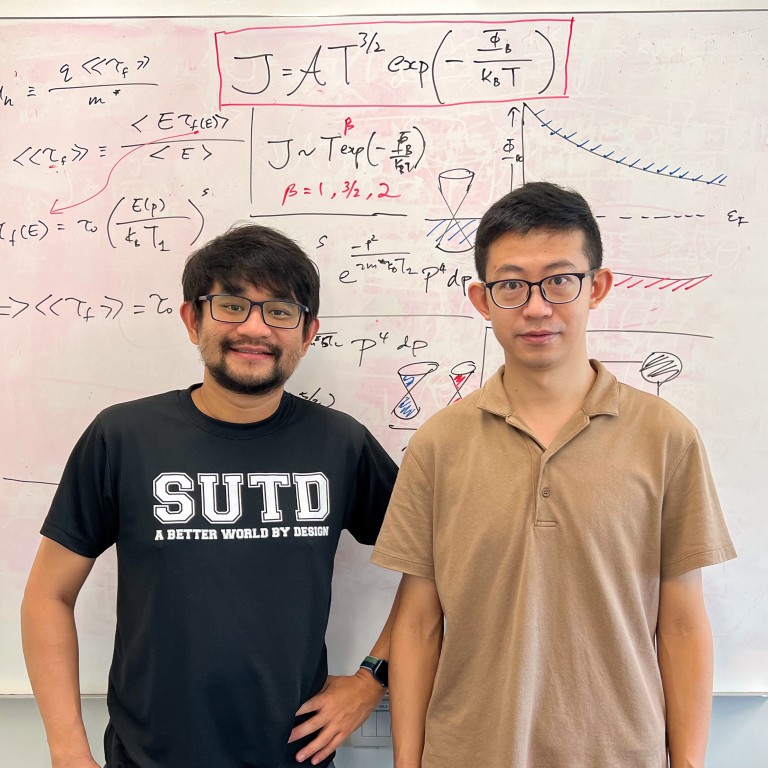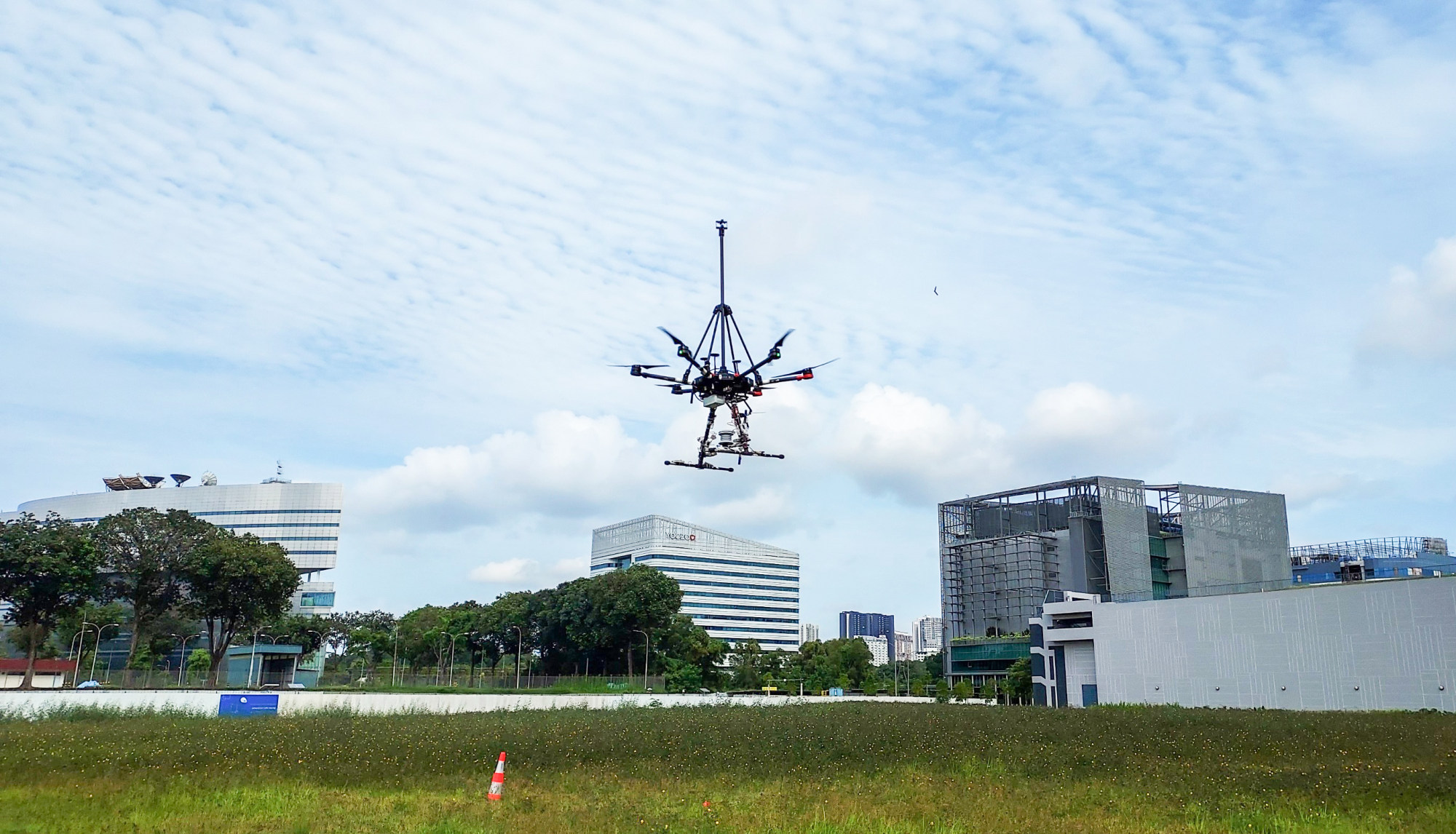
How Singapore’s scientists partner with Chinese peers despite complicated politics
- A quarter of the city state’s science publications are co-authored with researchers in China
- International collaborations bring together complementary skills for projects in climate science, pollution, semiconductors and AI
“Working with colleagues from China, to me, is a very natural thing,” said Wong, who collaborates with a team at Xian Jiaotong University in the northwestern Chinese province of Shaanxi in his research on urban heat islands.
“Singapore is so much closer to China in terms of similarities in our urban structure. In Europe and the US, it’s mainly low-rise, and buildings are spread out. But in Singapore, it’s high-rise and highly compact.
“Every time I visit China, when I work with my colleagues from China, I am very much at home. I speak with them with ease, without any problem. The cultural similarities between Singapore and China help to enhance and bond the scientific community.”
China lambasts US bill aimed at countering Beijing’s chip drive
Almost two-thirds of Singapore’s scholarly output over the past five years has been co-authored with foreign institutions, according to data provided by Elsevier, the world’s largest scientific literature publisher.
China to overhaul academic journals, boost profile of local scientific research
In the same period, a quarter of Singapore’s science publications were co-authored with China and 17 per cent with the US, according to an analysis of articles, book chapters and reviews.
Publications with Singaporean and Chinese co-authors grew from around 4,800 in 2017 to 7,900 in 2021, according to the publisher.
Anders Karlsson, vice-president of global strategic networks at Elsevier, said Singapore was “punching well above its weight” as the most important research hub in Southeast Asia.
China-US research collaboration seen under threat from geopolitics
But politics can complicate these efforts.
“As scientists and researchers, we really hope that politics will not affect scientific investigations and collaborations between institutions,” said Wong, the NUS professor.
“There’s very little that we can do when it comes to the politics, but we remain open to collaboration, discussion, sharing of scientific data and findings, regardless of where you are from.”

“There’s urgency in doing this kind of work because of all the climate change issues that we are experiencing now,” he said. “I believe that when the international community sees the valuable findings, they will continue to collaborate regardless of this political situation.”
“As far as science in itself being borderless, international science collaboration on climate change will continue to advance,” he said.
Hu Jiangyong, a professor of civil and environmental engineering at NUS, said Singapore’s researchers, who tend to focus on practical applications, benefited from working with Chinese peers interested in the fundamentals of science.
“Singapore is a small nation and natural resources are limited. We need to put our money in critical areas,” said Hu, director of the university’s centre for water research.
In 2019, Hu received an international grant to take her decade-long relationship with a Chinese Academy of Sciences’ water microbiology team to a funded joint project on controlling antibiotic-resistant bacteria and genes in drinking water.
“The collaboration wasn’t developed just overnight,” Hu said, adding she spent several years visiting and networking with researchers at CAS’ Institute of Urban Environment in the southeastern Chinese city of Xiamen.
In Singapore, 40 per cent of water supply comes from recycled sewage
Hu said her team had focused on control strategies because of their strength in developing novel technology and removing pollutants, while the CAS team helped with the understanding of the underlying science.
Hu said they developed a way to combine disinfection technologies – including using chlorine, chloramine and ultraviolet (UV) light to control harmful microorganisms – that could soon be patented and commercialised.
Although the teams managed to work together virtually throughout the pandemic despite restricted lab access, cancelled trips and lockdowns in China, Hu said future opportunities for in-person visits remained valuable to the research community.
“We’d like to see more collaborations in the future,” she said. “Climate change, the circular economy and emerging contaminants such as microplastics are all hot topics in the environmental engineering field. We need international scientists and engineers to jointly tackle them.”
‘Asian water tower’ is facing a worsening supply imbalance, study finds
Physicist Ang Yee Sin, an assistant professor at the Singapore University of Technology and Design (SUTD), said most of his recent published papers involved collaborations with Chinese institutes.
“There’s a very strong overlap with China. Many of my colleagues in China – a nation focused on building chip technology – are very interested in new materials,” he said.
“While China is very strong in artificial intelligence (AI), Singapore also wants to push towards AI. Manpower, natural resources and human resources will be our bottlenecks as a small country, so we need automation and robotics.
“For advanced material and technology beyond silicon, I believe that if Singapore is to succeed in the future, we have to become a design powerhouse.”
Ang, a theoretical physicist, relies on his peers at Nanjing University in eastern China to test devices based on his theories and prove his ideas through experiments.
“Without this synergy, I could only publish theory papers. They are impactful, but the reach is more restricted – only theoretical physicists will read my papers,” Ang said. By collaborating with the Chinese team, Ang said his ideas had been able to reach material scientists as well.
Professor Yeo Kiat Seng, associate provost for research and international relations at SUTD, said international research cooperation among faculty and their peers was typically bottom-up.
Singapore eyes top foreign talent in aim to become tech and innovation hub
“Faculty themselves are more familiar with the ‘who’s who’ in their respective scientific fields or disciplines,” he said.
At the university level, SUTD is in a long-term partnership with Zhejiang University in eastern China and participates in the Tianjin Eco-City project, a sustainable urban project co-developed by the Singaporean and Chinese governments.
“Scientific collaboration between Singapore and China underpins the mutual economic cooperation and progress of both countries, and enables the development of human capital and talent flows between Singapore and China,” he said.


